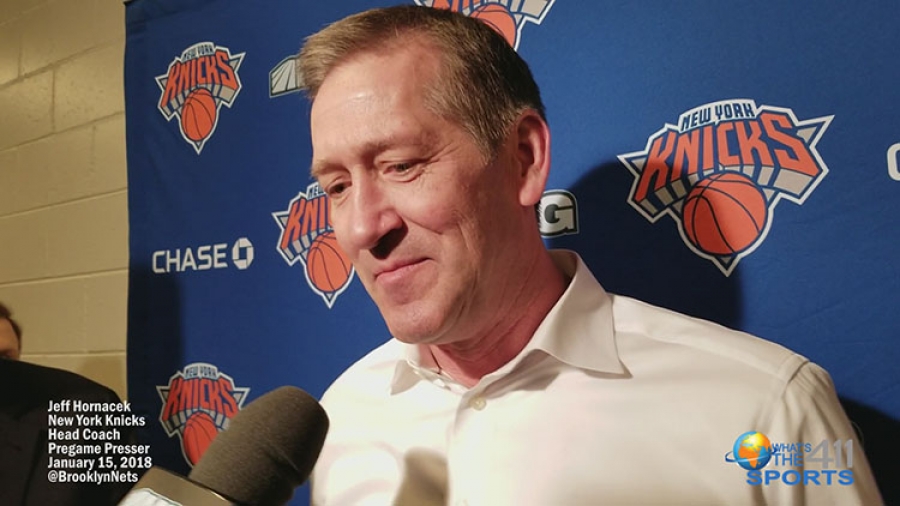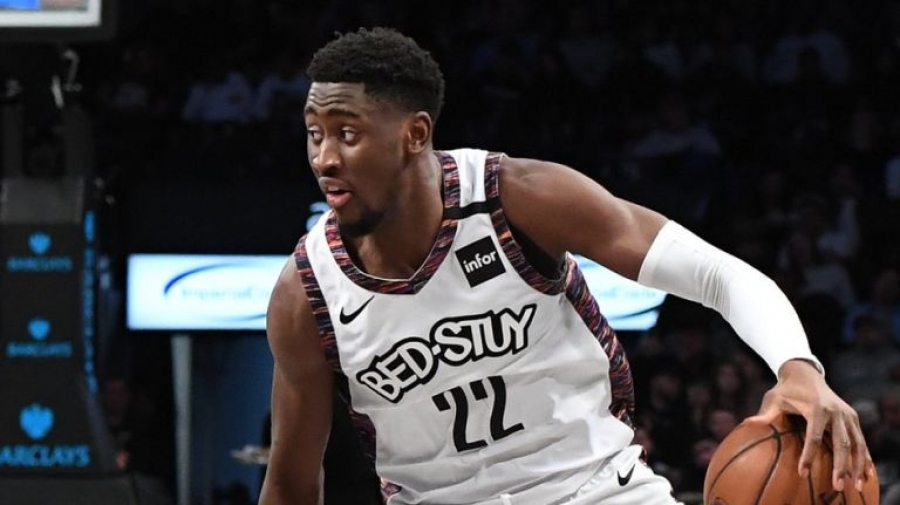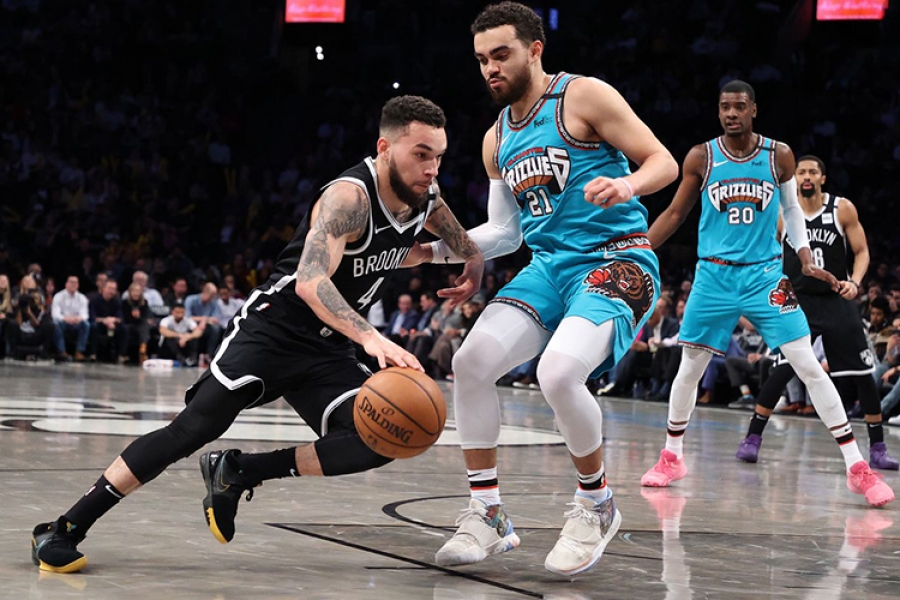D.A. Abrams: USTA's Chief Diversity and Inclusion Officer
August 29, 2014The TEAM USA initiative is an effort to further create and implement a structure that includes personal coaches, USTA Sections and USTA Player Development working closer together to help create the next wave of world-class American players. Our vision is to be even more inclusive, collaborative and supportive so that promising young players from all over the country will have the best chance to maximize their potential. -
Patrick McEnroe - GM USTA Player Development
Potential is what the US Open Qualifying Tournament is all about and takes place the week before official tournament play at the USTA Billie Jean King National Tennis Center. It gives the fans a chance to see many of the game's future stars, from around the world, compete against each other and for free. Many of today's most promising American tennis prospects are black and female. Young players such as Tornado Alicia Black (16), Taylor Townsend (18), Madison Keys (19), Sachia Vickery (19), Victoria Duval (19), Sloane Stevens (20), Alexandra Stevenson, Asia Muhammad (23) and Angela Haynes (24) and don't discount the young men, Francis Tiafoe, Michael Mmoh as well as former Junior Champion Donald Young. And they may owe much of their interest in the game to the groundbreaking success of Venus and Serena Williams.
However, equal credit must be given to the US Tennis Association's (USTA) Diversity and Inclusion programs, initiatives and the people who make it work. Deservingly, no one exemplifies the desires and benefits of the organization more than the USTA's Chief Diversity and Inclusion Officer, D. A. Abrams, and his journey and the ever-evolving policies of D&I are a perfect marriage of potential maximized.
David Anthony Abrams has spent his adult professional life working in the game he loves after being attracted to tennis from the images of the incomparable Arthur Ashe he saw as a youngster. His affection can be seen in the lessons the sport taught him, the education it provided him and his desire to see it represented by all who felt like himself. What's The 411's interview was a great opportunity to get these complimentary stories on the record and to reflect our mutual goal, present information as a call to action, support tennis diversity and hopefully, to be an impetus to help you follow your dreams. Enjoy the video interview with USTA's D.A. Abrams below!
Watch: Interview with USTA's D.A. Abrams
A partial conversation between D.A. Abrams and Glenn Gilliam follows:
WT411: We're here at the 2014 US Open Tennis Championships and we have the distinct pleasure of having the Chief Diversity & Inclusion Officer joining us today, Mr. D.A. Abrams. DA, thanks so much for being here.
D.A. Abrams: Oh it's really a pleasure to be here, thanks so much for having me.
WT411: How important is it to have your young stars of color represent, be successful and it helps your cause?
D.A. Abrams: First and foremost if you take note of the demographic change in the country, the fact of the matter there are more people of color living here so it just makes sense for us to have more people of color doing well in the sport of tennis. I mean that's the way we're going to attract more folks of color, in my judgment.
WT411: What is the Chief of Diversity & Inclusion's responsibilities generally and what other departments do you oversee?
D.A. Abrams: The mission of the USTA is to promote and develop the growth of tennis, so the way in which I like to describe what I do is making tennis look like America. And we have an all-hands-on-deck approach, to how we intend to make that happen. We have a strategic direction of six different pillars which really covers everything, not just young kids playing tennis. Everything from the volunteers to the staff, to supplier diversity, you name it we're trying to touch it all.
WT411: Do your programs talk about the history of the game, Althea Gibson, Arthur Ashe and Dr. Robert Walter Johnson their coach, to help build your volunteers and fan base and get folks excited about it?
D.A. Abrams: So earlier I said we have an all-hands-on-deck approach to how we are going to increase diversity for the betterment of the game. I talked a little bit about our pillars. The first one is human assets, so human assets is everything from volunteers, to staff, to providers, to coaches, to fans and ultimately to players, right? We believe that we need to diversify all of that in order to most effectively promote and develop the growth of tennis. The next one is image. You asked the question earlier regarding Arthur Ashe, Althea Gibson, I mean we want to make sure that we're putting out very positive images and we want to make sure that we're showing folks that hey you too can play this sport. So image both internally and externally is very, very important to us.
WT411: With regards to your tenure with the USTA, how did it start, how long have you been in this role, have you always had a love for tennis and what was your role prior to the Chief Officer?
D.A. Abrams: I've been with the USTA for a long time, since 1993, that's 20 plus years, but I've been in this role for a little over two and a half years. I started off as the national coordinator for a program called National Junior Tennis & Learning, which was founded by Arthur Ashe and a couple of other fellas way back in the day, 1969 or so. I did that for a while, I did Minority Participation that's what we used to call it before it became Diversity and Inclusion. From there, I became Executive Director of one of those 17 sections we talked about, did that for 4 years and then came back to the national office to serve as the Director of the NJTL. We had created its own department, which then grew into covering Special Populations, Adaptive Tennis, Wheelchair Tennis, Awards, so it became much more than what it was when I first came on. I then left to head up another one of our sections for six years and then back to USTA in this role and again it's been 20 plus years but it seems like its 20 months or so, it's been going by really, really quick.
WT411: Did you always have a love for tennis?
D.A. Abrams: I learned how to play tennis through the National Junior Tennis & Learning Program, in Philadelphia and just to go back to how I think images are very, very important. I was watching TV, now I tell this story and I just want to make sure that I'm telling it correctly. I was introduced to tennis before I actually started to really play. My sister took me out to the courts, it wasn't a lot of fun because we were just hitting at the ball and we're both picking up balls, right? So it really wasn't until I'm at home, watching PBS, cause this was back in the day when tennis used to come on TV, just about every weekend and I see this African American guy playing that happened to be Arthur Ashe. Now he made it look so easy, that I thought oh, now if Arthur Ashe can do this, I can get there and do this too. Well, that wasn't the case, but I did go out and it got me playing and it's kept me playing and that is the reason why, quite frankly, I'm in this role today. My love of tennis and just being able to, not just play tennis but use tennis as a vehicle to better myself and it's not just me, so many youngsters that were brought up in this local program in Philadelphia, which is a national program. There are over 600 such programs throughout the country touching about 300,000 kids or so every year, so it's a very powerful program.
WT411: Great story, but to get a little more personal, where's your hometown, where are you from and where did you go to school?
D.A. Abrams: I'm from Philadelphia; I grew up in North Philadelphia. Went to High School at a place called Strawberry Mansion, in a pretty tough neighborhood. Was fortunate enough to get a tennis scholarship to a small Division II state college by the name of Millersville, which is in Lancaster County, Pennsylvania. So that worked out quite well for me but I think it even worked out better for my parents because they didn't have to pay anything.
WT411: In terms of your transition to the USTA, after you found your love of tennis and you were playing it, how did you find your way to the organization?
D.A. Abrams; So that's a really good question. I grew up playing tennis. When I graduated from college I went to work as an accountant for a company called Control Data Corporation, out in the twin cities of St. Paul /Minneapolis. I'm not a millennial but I probably have traits of millennials because I just wasn't patient enough, quite frankly, I wanted to get back to tennis. Now had I stayed there, I probably wouldn't be here today but it was a blessing that I wasn't patient enough wanted to get back to tennis, went back to Philly worked for an organization called the Arthur Ashe Youth Tennis Center, and then got the opportunity to come work at the USTA.
WT411: In terms of those Human Assets, how important is it to broaden that diversity pool at the USTA and see those people get elevated, get promoted and move on?
D.A. Abrams: Well it's very, very important. In fact it's so important that we have a, what we like to call a D&I or Diversity & Inclusion scorecard and tennis participation is one of the markers and one of the measures, that's very important, our mission is to promote and develop the growth of tennis. We talked earlier about how Supplier Diversity, so that's one of the markers, but the other two markers, in my view, are very important and they both have to do with human assets. So what does that all mean, in terms of moving up to leadership positions. We're looking at everything but we're measuring who's leading these organizations, who are in management, who are the members of the C-Suites? And I will tell you, that now today if you look at where we are today as opposed to when I started, it's night and day. In fact, when I started on the board of directors, volunteer board, there was one gentleman of color, by the name of Gary Lee, Asian American male from northern California. He was on for a little bit then he dropped off and then there was an African American male that came on the board, by the name of Dwight Mosley, first AA to make the board, he was on for a little bit unfortunately he passed away and then Mayor Dinkins came on to the board and he served for a while and then other folks of color started to serve as well, so it was no longer just one at a time. So fast forward to where we are today. Our first Vice President is a woman by the name of Katrina Adams; she is the first African-American person to serve in that role. We're hoping one day that she will rise to the level of President and if that happens, she will be the first African American President of the USTA. Again, not a lot was happening in 1993 but we were trying, we're starting it but now you fast forward to today and it's looking pretty good there.
WT411: We know the goal is to reflect America and for African Americans the barriers remain economic, access to courts, training, instruction and equipment. What are you guys doing specifically to address those things?
D.A. Abrams: Well we do a number of things, let's first start with that NJTL program, what I failed to say earlier is that NJTL program is an outreach program it's really designed to attract youngsters that would not ordinarily play the sport and that's in 600 markets across the country. No. 2 is we have schools program, where we actually take tennis to where the kids are during the day and we partner with other organizations to provide after-school programs. So we are ensuring that we are going to reach African Americans, Latino Americans, Asian Americans, members of the LGBT community and others. In terms of the equipment, as of a few years ago we started youth-sizing the equipment. Think about that, when I started to play I was trying to play with the same racket as Arthur Ashe. Today, the balls are softer, they bounce higher, the equipment's a lot smaller, the nets are shorter so when you go out, you're pretty much going to have instant success. You may not be able to hit the ball like Serena Williams or Venus Williams but you will have instant success and it makes the game a lot of fun, which will keep you coming back.
WT411: Congratulations on the 2014 nomination for the DANDI Award, that's the Diversity and Inclusion Award, what are you doing with your initiatives to distinguish yourself from your competitor?
D.A. Abrams: Again, we have a D&I all hands on deck strategic plan and approach to really ensuring that diversity and inclusion is utilized as a strategy to grow tennis. We went through the six pillars earlier, what we didn't talk about is how we have those six pillars supported by recommended goals for each one of the pillars, in addition to that suggested tactics.
WT411: The JTLs (Junior Tennis Leagues), there are 6oo across the country, how influential is it that you have with those JTLs, in terms of delivering your programs and how do you interact with them to reach your goals?
D.A. Abrams: I mean this is not hip hop but in hip hop you would say "street cred", right? I think that's what the young people say. I grew up playing in JTL, I am an NJTL graduate, so I can go in and talk to folks, not just the administrators, but I can identify, if I can identify with the young folks, I can at least pull that card. I think it helps, we work very closely with that department, in fact, we have a number of cross-functional teams, we're working very, very closely with that department to ensure that we're supplying them with what they need and they're helping us achieve our goals as well.
WT411: With regards to what's going on in the country today, obviously with Ferguson, here in New York City, it's got to be even more important the work that you guys are doing, do you try to relate any of that current events, that real time stuff to your trainers or your volunteers when your implementing your programs?
D.A. Abrams: For the most part, we do and we don't, if it comes up in a discussion and current events they do come up in discussions we are prepared to answer that and to answer those questions and to incorporate the learnings within the training. The big thing for us is to get across the idea that D&I is a strategy. It's a legitimate and very powerful strategy to help you achieve your already existing goals, whether they be USTA, whether they be tennis related, whether they be life skills, life goals, you need this in order to really do extremely well, not just well but extremely well.
WT411: I want to touch on Supplier Diversity, we talked about it earlier, how important is it to increase those ranks, to bring other suppliers into it and what is the USTA looking for, what kinds of companies is the USTA interested in?
D.A. Abrams: Anyone that can provide a value-add to us, we're very interested in learning more about them. We're very, very serious about Supplier Diversity. Two years ago we had 15% diverse spent, across the enterprise, which is very powerful, a lot of companies on average maybe about 6% or 7%, last year we went down slightly, we're still at 13.5%. We have an individual on our team that that's all they do, in fact the USTA is so serious about really utilizing Diversity & Inclusion to help us grow the sport, we have a department of six and that's pretty big for D&I. We're really walking the talk if you will and I'm very proud of what our leadership is doing both our President and the Board, as well as my boss, I'm a direct report to Gordon Smith, it's just couldn't be more supportive so it's a great place to be right now.
WT411: Are you familiar with MLBs Diversity Summit and do you take some best practices from that?
D.A. Abrams: Yes we steal a lot of those best practices. We're very familiar with that and we've been to all three, the last one was in New York. We're very familiar with what they do and steal a lot of what they do.
WT411: What's your most rewarding moment in your present position, for yourself individually and with your team?
D.A. Abrams: Well I have to go back, I started a long, long time ago and to know that we have an African-American serving as the first Vice President of the USTA is extremely rewarding to me. It's not that I did that, but the fact that I work for an organization that has elevated someone of that stature to that position, means a great deal to me and I think it means a great deal to the organization and certainly to tennis. I think I said earlier that at the USTA, all directors and above must have a D&I related goal, it's not an option, they must have it. Now that's new in 2014 and trust me that's very big.
WT411: As a media company, is there any opportunity to include more media partners of color to get your message out, to be a little bit more of a voice in those communities you're trying to target?
D.A. Abrams: No, we would love that, I was a panelist along with Wendy Lewis of Major League Baseball and a fella from NASCAR at the National Association of Black Journalists in early August. I asked them, you got to ask for what you want, right? For what you're asking me the answer is yes, we would love for you and other companies such as yours to be supportive in getting the message out. We've got a lot of good stories to tell, from the grassroots, to what we're doing in youth tennis, to what we're doing with adult tennis, to what we're doing to get these youngsters that are on the cusp of being, maybe great players, we've got a lot of good stories to tell.
US Tennis Association Celebrates Diversity and Inclusion at 2012 ICON Awards
September 17, 2012VIDEO: USTA President talks about mission of USTA ICON Awards, and Pat Summitt receives the Billie Jean King Legacy Award
Jonathan Vegosen, President and Chairman of the Board, USTA; spoke with What's The 411 TV's Andrew Rosario about the mission of the U.S. Tennis Association and the USTA ICON Awards.
The 2012 USTA ICON Awards, in its fourth year, and held at the US Tennis Center during the US Open, celebrates diversity and inclusion. This year, the USTA ICON Awards honored Pat Summitt, the former University of Tennessee Women's Basketball Head Coach and now Head Coach Emeritus, with the Billie Jean King Legacy Award. Ms. Summitt is the all-time winningest coach in NCAA basketball history of either a men's or women's team in any division. Tennis legend Billie Jean King presented the award to Ms. Summitt.
The association also honored posthumously 2012 International Tennis Hall of Fame inductee and wheelchair tennis pioneer Randy Snow; and former USTA CEO and pioneer of the Diversity and Inclusion Department at the USTA, the late Lee Hamilton.
Arthur Ashe Kids Day 2012 A Fun Day for All
September 07, 2012VIDEO: Sights and sounds at the Arthur Ashe Kids Day 2012 held at the US National Tennis Center
Arthur Ashe Kids Day offers something for everyone. There were opportunities to watch tennis pros practice; attend concerts with pop and R&B stars such as Carly Rae Jepsen and Mindless Behavior; and tennis clinics for the little ones. The video also shows that kids and adults alike stood ready to get autographs from their favorite players.
Arthur Ashe Kids Day also celebrates the writing and artistic skills of young people connected to the National Junior Tennis and Learning network founded by Arthur Ashe. Former New York City Mayor David Dinkins was on hand to help celebrate the winners of the Arthur Ashe Essay and Art Contest. Mayor Dinkins also spoke about the genesis of the Arthur Ashe Kids Day and What's The 411 TV's Andrew Rosario captured it all.
Arthur Ashe was born on July 10, 1943, in Richmond, Virginia and is remembered for his excellence as a tennis player as well as his efforts to further social causes. He remains the only African-American player ever to win the men's singles title at Wimbledon, the Australian Open or the US Open. His legacy continues to have a positive effect on our society.
Arthur Ashe Essay and Art Contest Winners
September 07, 2012VIDEO: Winners of the Arthur Ashe Kids Day 2012 Essay and Art Contest
The Arthur Ashe Essay and Art Contest celebrates the writing and artistic skills of young people connected to the National Junior Tennis Learning (NJTL) network founded by Arthur Ashe.
The Arthur Ashe Essay and Art Contest celebrates the writing and artistic skills of young people connected to the National Junior Tennis Learning (NJTL) network founded by Arthur Ashe.
New York City Mayor David Dinkins was on hand to help celebrate the winners of the Arthur Ashe Essay and Art Contest. The winners learned a great deal about Arthur Ashe and were genuinely honored to receive their awards.
Overall, Arthur Ashe Kids Day 2012 offered something for everyone. There were opportunities to watch tennis pros practice; attend concerts with pop and R&B stars such as Carly Rae Jepsen and Mindless Behavior; and tennis clinics for the little ones.
Arthur Ashe was born on July 10, 1943 in Richmond, Virginia and is remembered for his excellence as a tennis player as well as his efforts to further social causes. He remains the only African American player ever to win the men’s singles title at Wimbledon, the Australian Open or the US Open. His legacy continues to have a positive effect on our society.
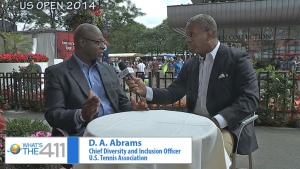
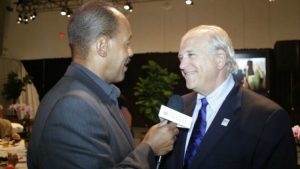

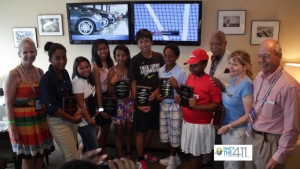
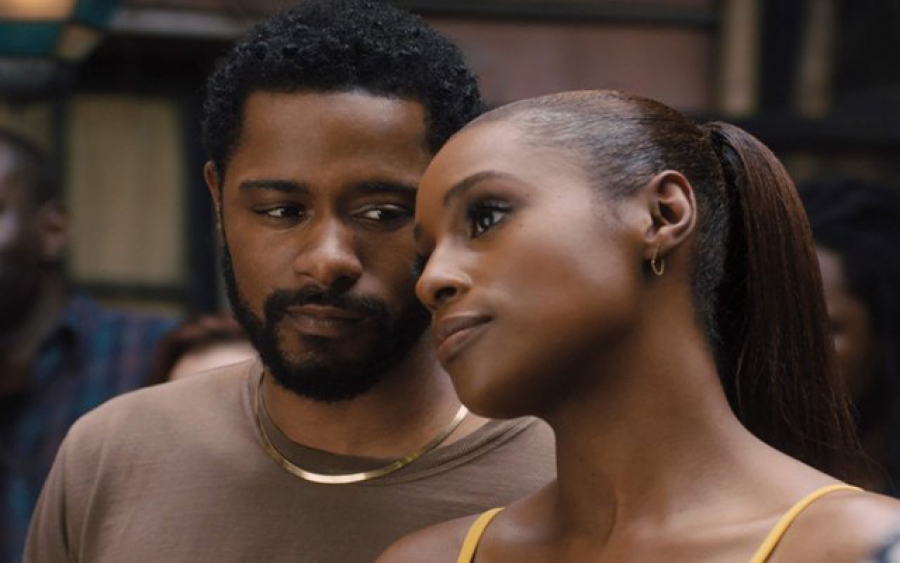
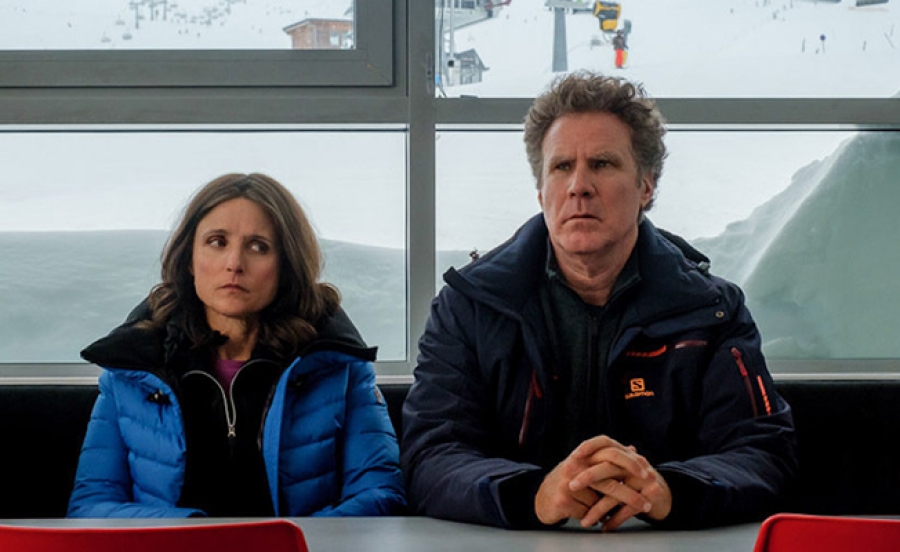
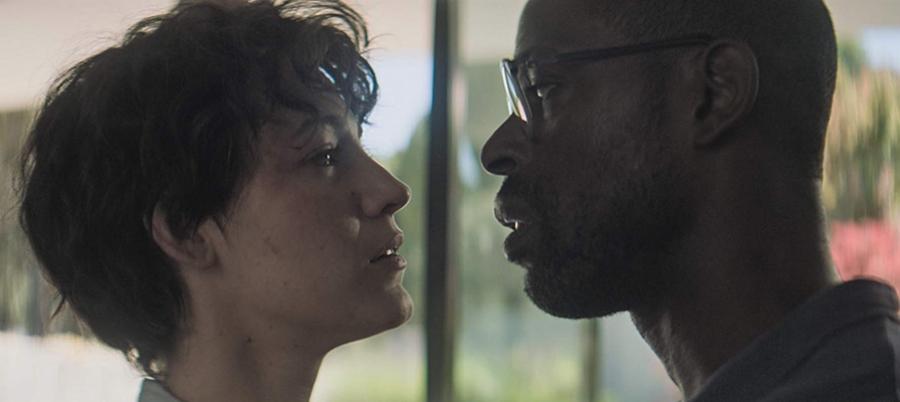

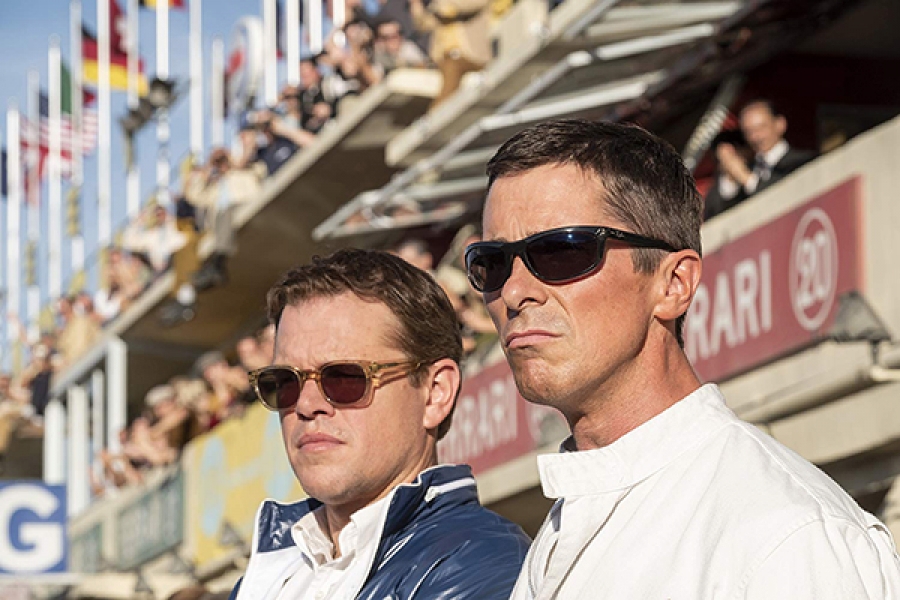

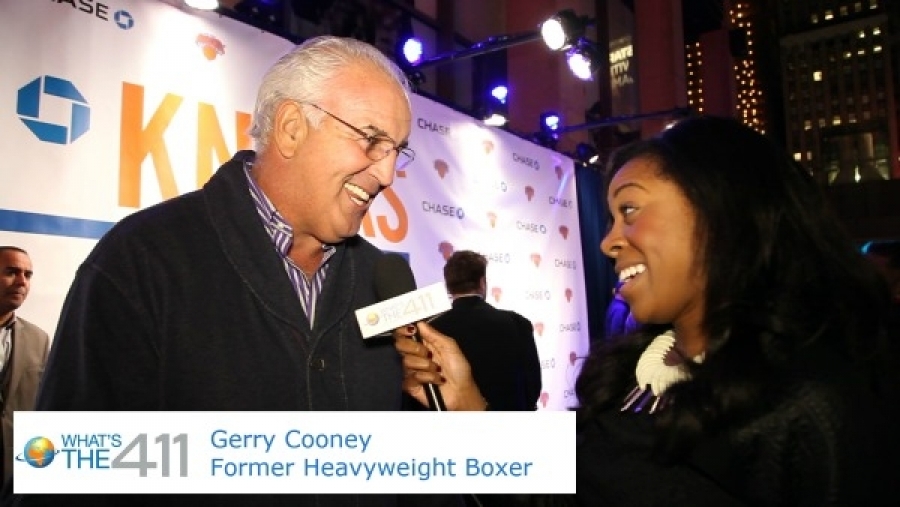
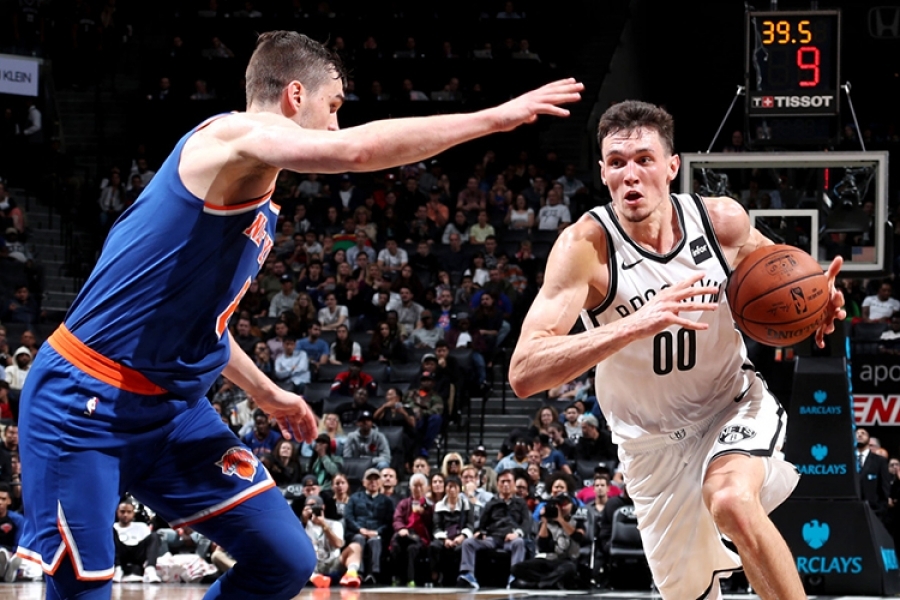
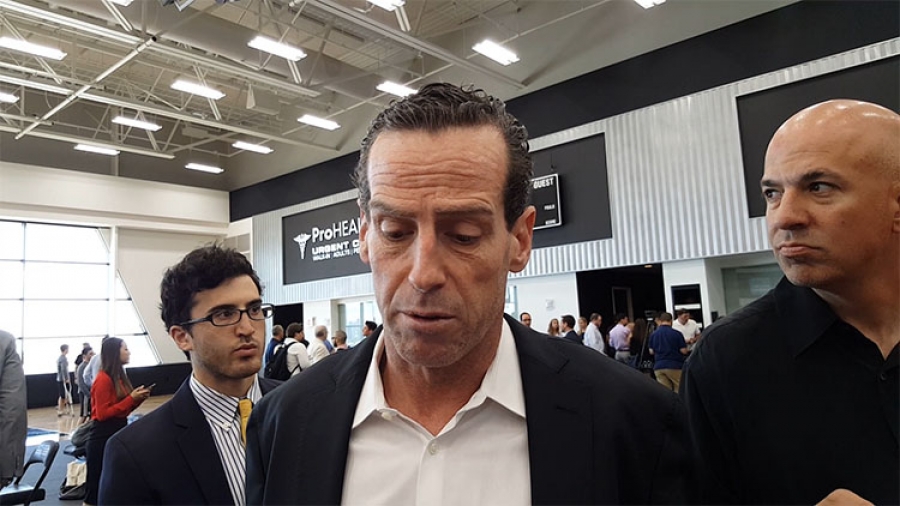
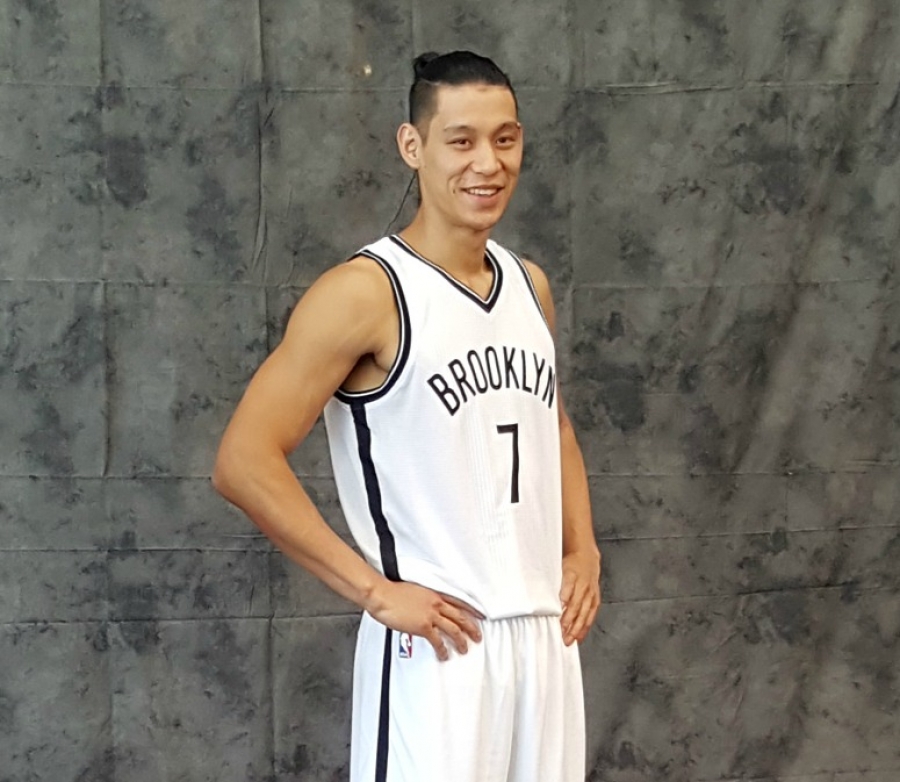
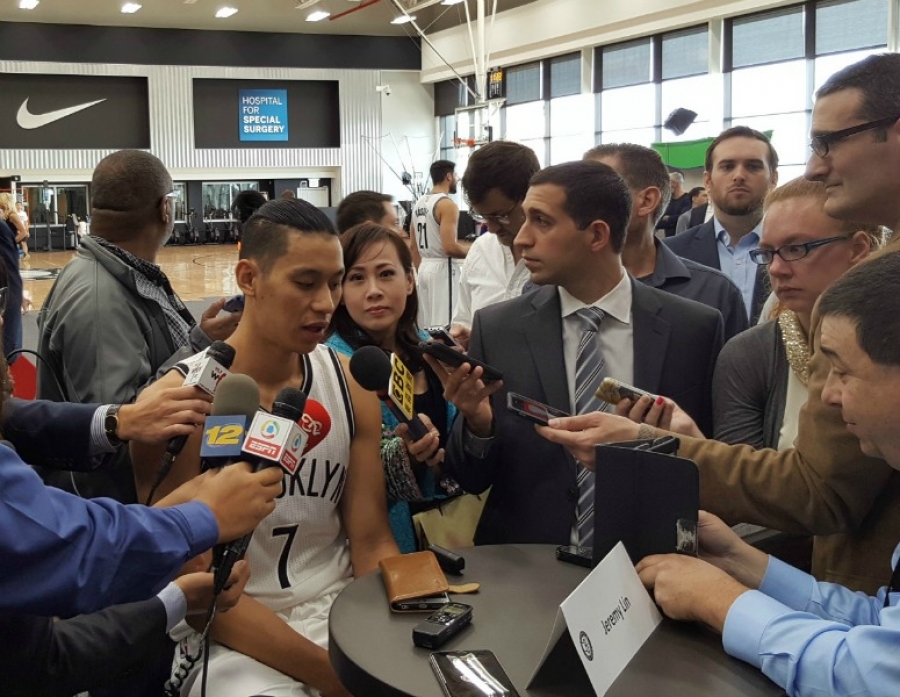
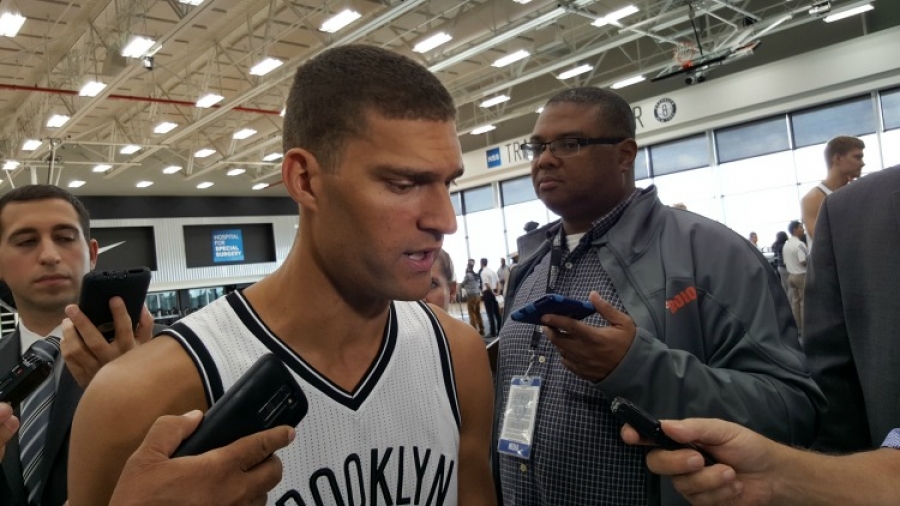
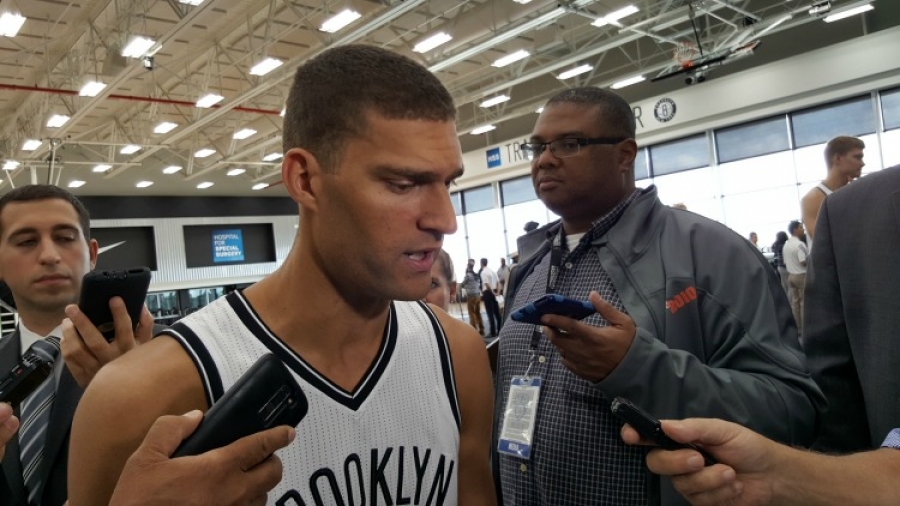
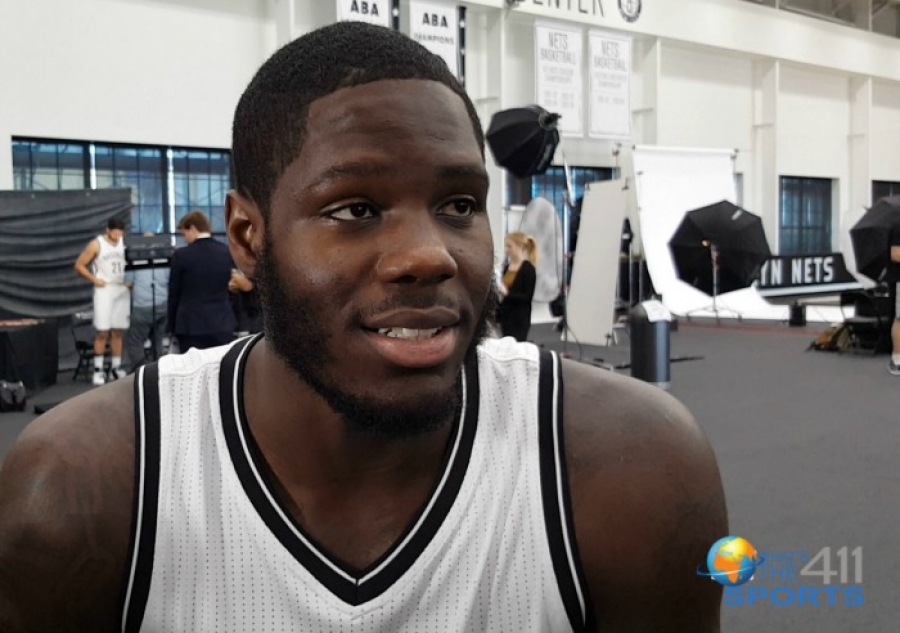
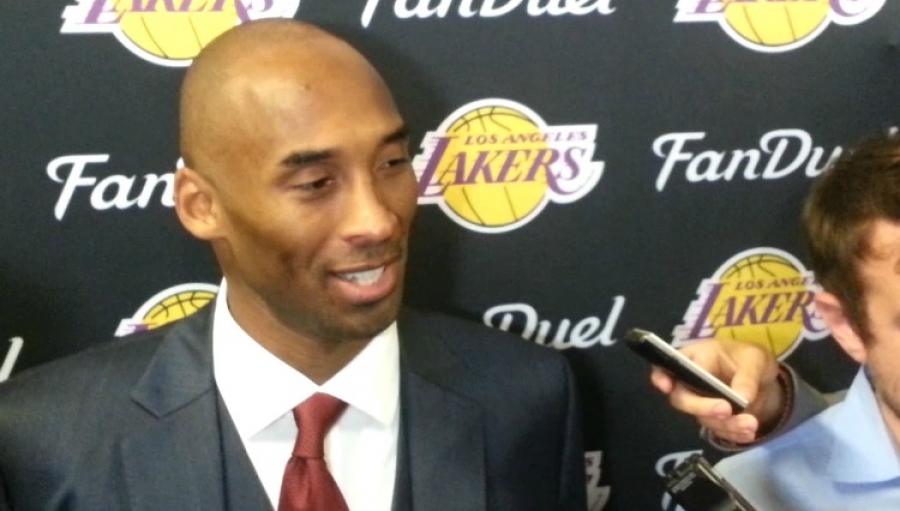
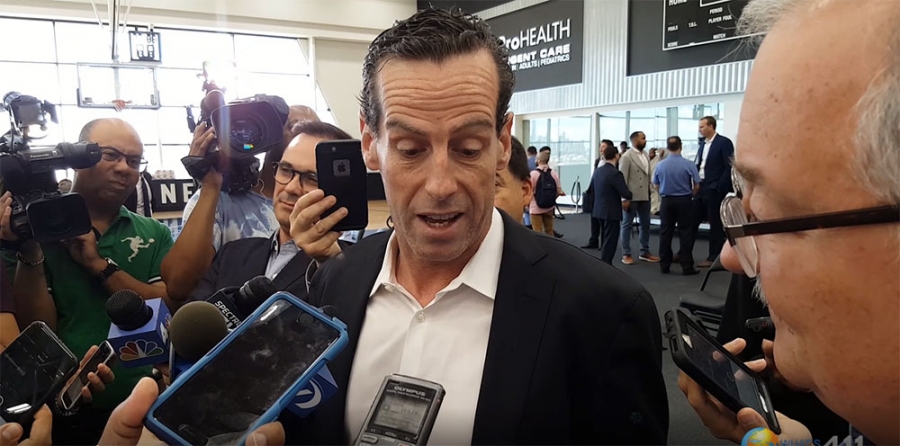

![Doc Rivers Talks About Encounter with Referees [as a Spectator]](https://411sportstv.com/media/k2/items/cache/21615ff211c60b43d866a2b2bca320da_XL.jpg)
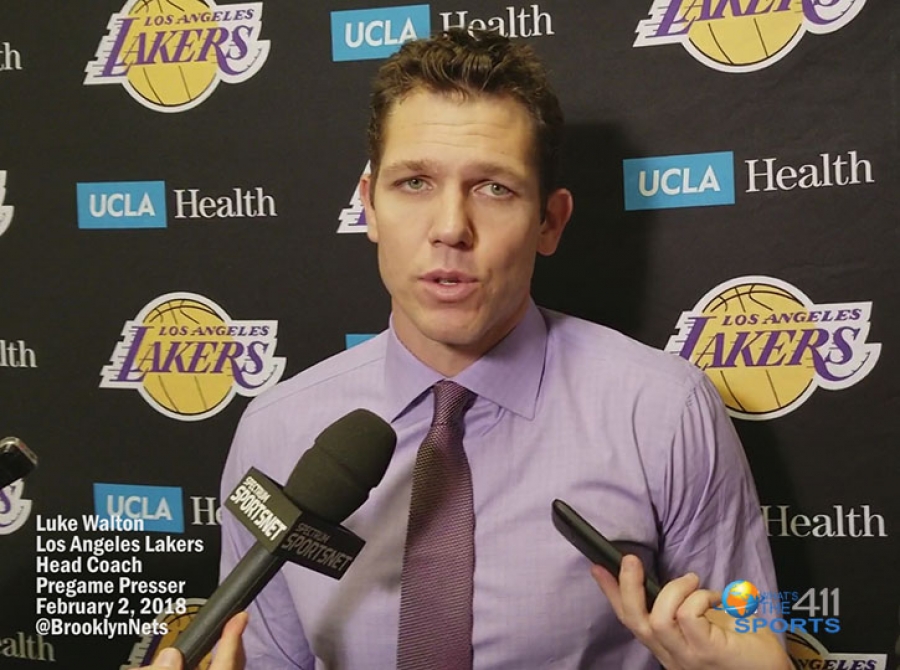
![Gregg Popovich Dishes on Spurs Assistant Coach Becky Hammon [VIDEO]](https://411sportstv.com/media/k2/items/cache/e4695529e9bbf8b60b6165d76397876b_XL.jpg)
